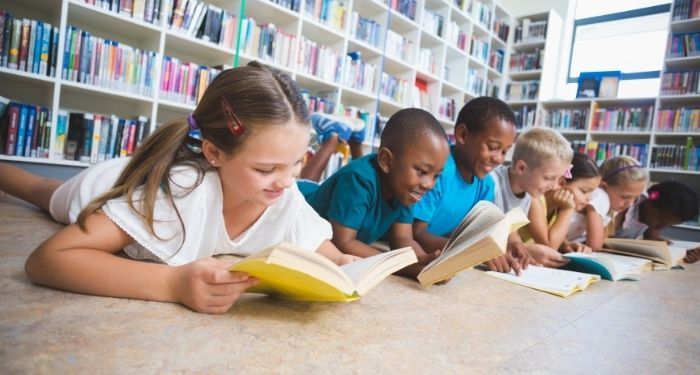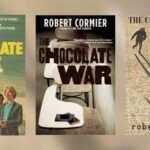
The Difference Between Academic and Pleasure Reading, and Why It Matters For Kids
One of my missions in the school library is to develop a culture where students can pursue reading for pleasure, but this mission developed over the years. I started by wanting to work towards a love of reading, but this was too vague and overwhelming. Eventually, I realized I was hoping students would love pleasure reading, and I added that qualifier. At this point, after working as a librarian for over five years and teaching early education for 16, I know that a mission to make someone love reading is not helpful. What I need to do is present them with a choice.
I’ve tried a lot of different things to help students make a decision about how they read for pleasure. I give them access to different reading formats, ask for their input on curriculum development, and try to make books easy to find. One of my most recent lessons has been explaining and then celebrating the difference between academic reading and pleasure reading. Knowing the difference between the two is just the next step in helping students see what role reading might play in their lives.
Academic Reading
This kind of reading is textbook, school-based reading. When students are with me in the school library, I tell them that this is what they’re working on in the classroom. This is reading to find an answer. This is reading to support comprehension skills like summarizing and identifying the main idea. I explain to students that this kind of reading is usually not a choice, but an assignment. In the non-school world, this looks like the reading you might do to teach yourself how to start a garden or dye your own hair. Book club picks could fall here — reading the book is not a choice, and follow-up questions will be asked.
Not all academic reading is nonfiction, and not all nonfiction books are academic reading. The difference is the purpose behind the action. I like to use this discussion to really drive home the concept of the DNF. DNF stands for did not finish, and I talk about how important this idea is when we’re differentiating between different types of reading. Typically, when you’re working with academic reading, whether it’s in school or in the real world, you don’t have the option to DNF a book based on how you’re feeling. Academic reading is all about getting to the final answer
Pleasure Reading
Pleasure reading is exactly what it sounds like. This is reading done just for fun, for nothing more than simple enjoyment. When describing it to students, I remind them that pleasure reading is going to look way different from person to person. Unlike academic reading, there is no correct answer to pursue. This is where DNF comes in heavily. I explain to students that readers need to let themselves abandon books easily and often. It’s okay to put down a book based on the back cover, the first chapter, or when you know you only have 20 pages left. All that matters is that you give yourself permission to stop whenever you want.
I stress to my students that the library is where we actively practice our pleasure reading. This is why we have lessons on browsing, why we use shelf markers, and the reason we chorus constantly that graphic novels, ebooks, and audiobooks “count” as reading. It’s important for kids to learn from a young age that accessing reading materials is going to look and feel different for every single person, and that judging someone based on any of those choices is ignorant.
Why It Matters
Even though this distinction seems really simple when it’s spelled out, it’s not something inherently understood by most in educational settings. Even if there is a push to tell the difference between academic and pleasure reading, it typically lives in a conversation about putting academic reading first, and having pleasure reading set aside as an extra when time permits. I imagine this is the reason for data showing that reading for fun drops off significantly towards the end of elementary school.
Teachers, librarians, and the general public hold a lot of assumptions about reading. One of them is that being good at academic reading correlates to being good at pleasure reading, and another is that the opposite holds true. When we take time to show kids that there are different ways and reasons to read, it’s another step towards opening up the world of reading enjoyment. Explicitly teaching students how to browse, borrow, and return books gives them the opportunity to try lots of different things until they find something that clicks. Ensuring that they accept ebooks, audiobooks, and graphic novels as reading options gives students more variety and helps dispel some of the snobbery around reading as a hobby. These aren’t things that every person is going to pick up on their own, and the school library is the perfect place to teach these lessons.
Not every person is going to enjoy reading for fun, and that is fine. Reading is not the only acceptable hobby, and having it as a hobby does not make you inherently smarter or better than anyone else. However, it can be a source of joy for a lot of people, and helping young people figure out if that is true for them is an important job. As a school librarian, I feel like it’s my purpose to show as many different avenues for pleasure reading as possible, while never allowing shame to become part of the equation in any way. Once students understand that their academic reading life is not the same as their pleasure reading life, I try to let them explore what their library has to offer in a low-stakes way. Once they’ve been given that power, what they do with it is up to them.



